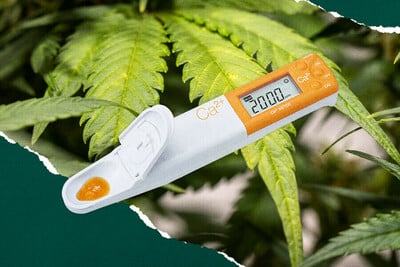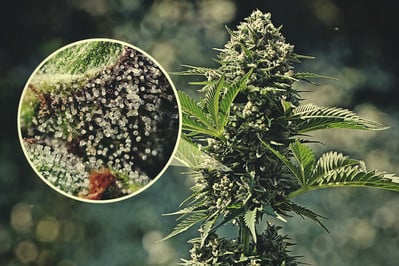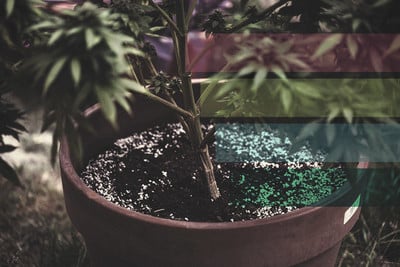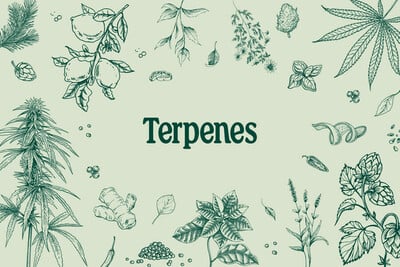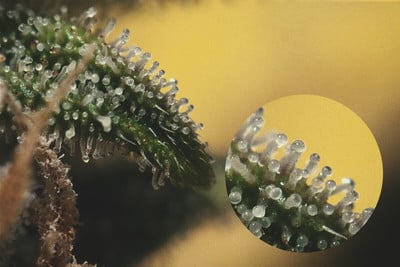.
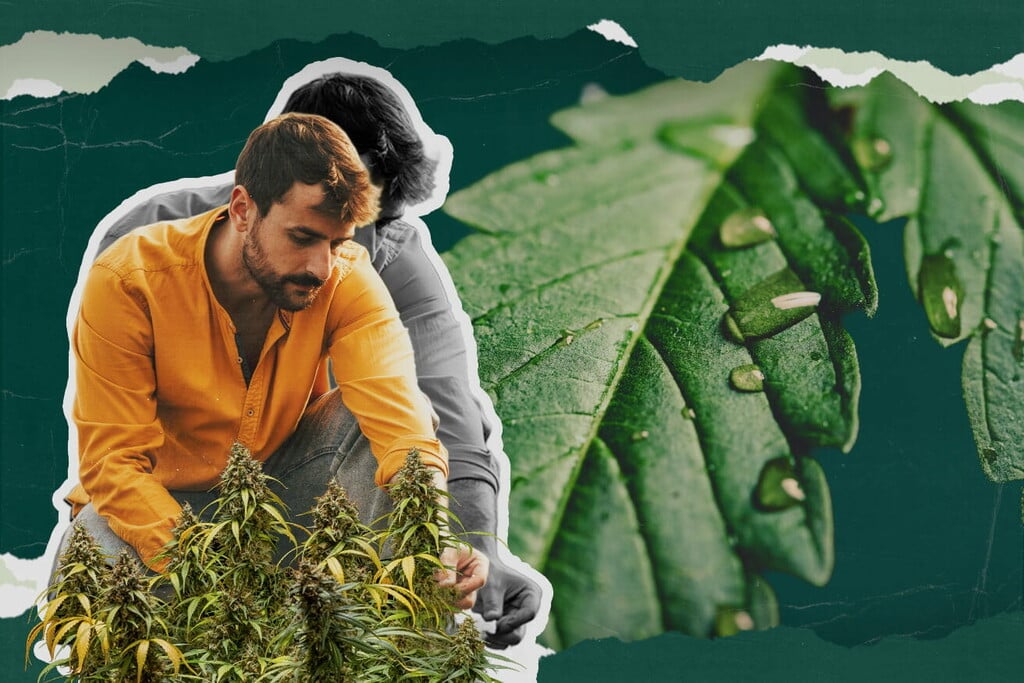
What Is Cannabis Guttation? All You Need to Know
Guttation is a natural process where cannabis plants release sap-like droplets from their leaves. Often confused with dew or resin, guttation provides insight into plant health and growing conditions. While it can indicate strong root pressure, excess guttation may also signal issues like overwatering or increased disease risk.
Contents:
Key Points
- Guttation is a natural phenomenon where cannabis plants exude sap-like fluid from their leaves.
- Guttation liquid differs from dew and resin but often confuses growers.
- The process is linked to factors such as root pressure, soil moisture, and nighttime conditions.
- Understanding guttation offers insights into plant health, but it can sometimes indicate problems too.
You never know what you’re going to encounter when you enter your grow room or garden. On a good day, you might come across vibrant, dark green leaves and swollen and sticky buds, while on bad days, you’ll witness signs of deficiencies and disease, such as yellowing leaves and visible insect damage.
All of the above are common experiences for regular weed growers. However, far fewer cultivators come across guttation—a somewhat uncommon event in which weed plants start exuding a mysterious liquid.
Growers that experience guttation often mistake these droplets for large deposits of resin, but their chemical content and biological purpose go much deeper than this. Continue reading to unveil the secrets of guttation. Find out what it is, why it happens, and what it indicates below.
What Is Guttation in Cannabis Plants?
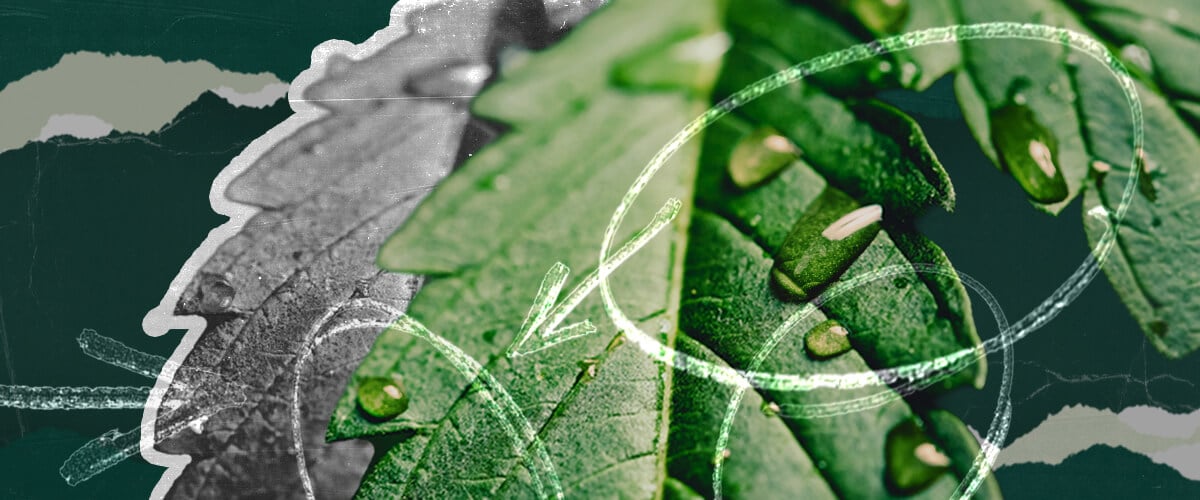
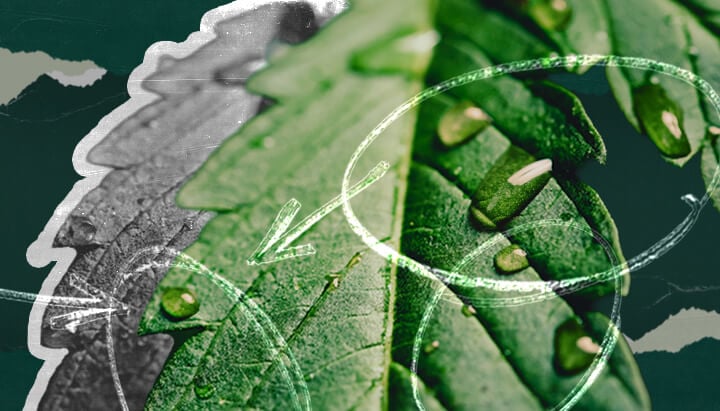
When growing conditions are right, weed plants squeeze mysterious droplets out of their leaves—a process known as guttation. A strange word at first glance, it has its roots in the Latin “gutta”, meaning “a drop of fluid”.
Guttation liquid, or sap, starts to gather on the edges of leaves when pressure within plants builds to a certain point. You can almost view this phenomenon as a pressure valve opening up to release a buildup inside your weed plants.
Interestingly, guttation isn’t unique to cannabis. It occurs in a wide range of plant species; you’ll sometimes see the liquid emerge on the edges of strawberry leaves and the tips of corn leaves.
Guttation also occurs outside of the plant kingdom. For example, the blood droplet-like fluid that forms on the cap of the tooth fungus Hydnellum peckii is a form of guttation.
Cannabis Fluids: Guttation vs Dew vs Resin
When strolling around your garden, you may mistake guttation for dew. Guttation often builds up on plants during the night following exudation from high root pressure.
In contrast, dew forms on leaves from the condensation of water in the air. More than mere water, guttation drops contain a mixture of water and nutrients.
Likewise, some growers mistake guttation for large resin deposits. While an easy mistake to make, guttation and resin are two entirely different substances with varying appearances.
As a mixture of sap and water, guttation liquid is squeezed out through a specialised hole in the leaves. Resin is much more viscous than guttation liquid and typically doesn’t appear as large droplets. Rather than emerging from leaves, resin is exuded from glandular trichomes and spreads evenly over cannabis buds.
Physiological Process of Guttation
So, what exactly causes cannabis plants to start oozing fluid from their leaves? Does cannabis guttation depend purely on external environmental factors, or processes happening within plants themselves?
In truth, it’s a combination of both internal and external processes. This phenomenon has a lot to do with soil moisture, root pressure, and the time of day. Keep reading to learn exactly what causes guttation in weed plants.
When and Why Does Guttation Happen?
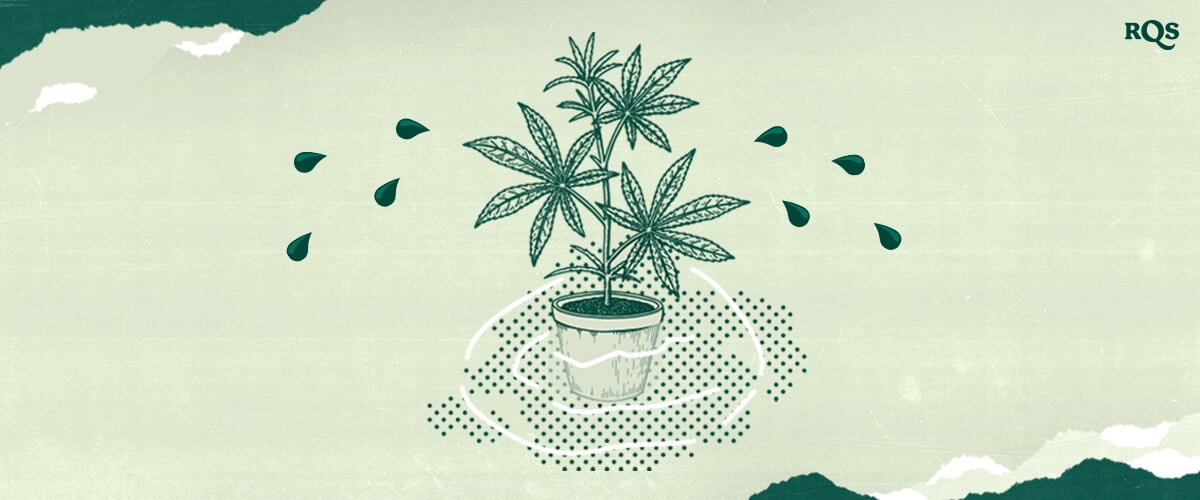
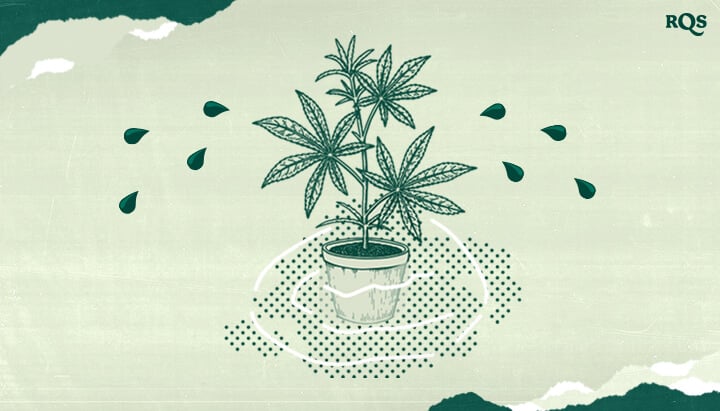
Guttation happens when plants need to release excess water. However, it only occurs in specific conditions when plants aren’t transpiring.
Under normal circumstances, water moves through plants via a phenomenon called transpirational pull. After absorbing water through their roots, water moves upwards through plants via vasculature tubes called xylem.
The upward movement of water in plants occurs because of gas exchange at the leaf surface. Here, small pores called stomata open and close due to the action of specialised guard cells. The stomata release both oxygen and water vapor, and intake carbon dioxide.
The release of water generates a pulling force that allows plants to continually uptake water from the soil through their roots. This flow causes an internal pressure, or turgidity, that keeps plants firm, strong, and upright.
However, cannabis plants don’t transpire constantly. The lack of light during the nighttime hours halts photosynthesis, causing plants to close their stomata and conserve water. But plants sometimes still need to exude excess fluid during nighttime hours.
In moist soil conditions, water still enters plant roots, owing to low water potential within the roots themselves. This causes pressure within the roots that in turn causes the upward flow of water without transpiration taking place.
But remember, the stomata remain closed. But cannabis leaves provide another avenue of release for guttation: hydathodes. Found in vascular plants, factors such as light and plant hormones are responsible for the opening and closing of these additional pores.
Likewise, temperatures during the night mean water remains liquid and scarcely evaporates. Therefore, guttation tends to remain in the form of droplets until temperatures rise during the morning.
A Look at Plant Xylem vs Phloem

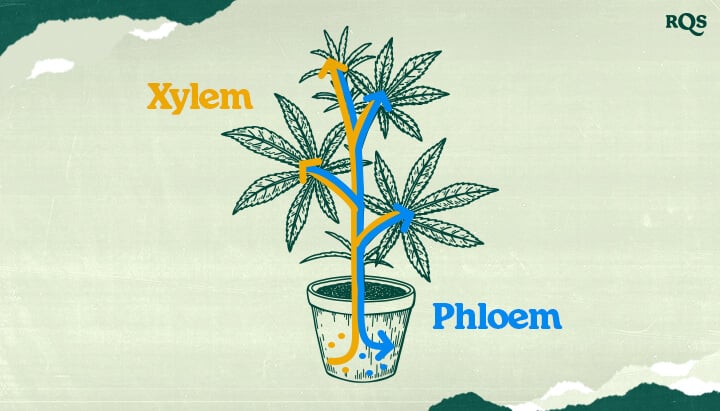
Plant guttation sap emerges through hydathodes from the vascular system of weed plants. Formed of xylem and phloem, these tubes ascend from the roots all the way to the tips of the leaves, and are responsible for transporting vital substances that contribute to plant growth, development, and survival.
Xylem consist of a chain of cells with no end walls. This system features an outer layer of non-living cells and ferries around water and mineral salts in a one-way direction of flow.
Phloem, on the other hand, are made up of living cells that contain end walls. They transport sugars (an important fuel source for plants and symbiotic microbes) and amino acids (the building blocks of protein) in a two-way direction of flow.
Guttation sap consists of the substances transported by both xylem and phloem. More viscous than water, the addition of amino acids, sugars, and minerals gives it a sticky and sap-like consistency.
How to Identify Guttation in Cannabis Plants
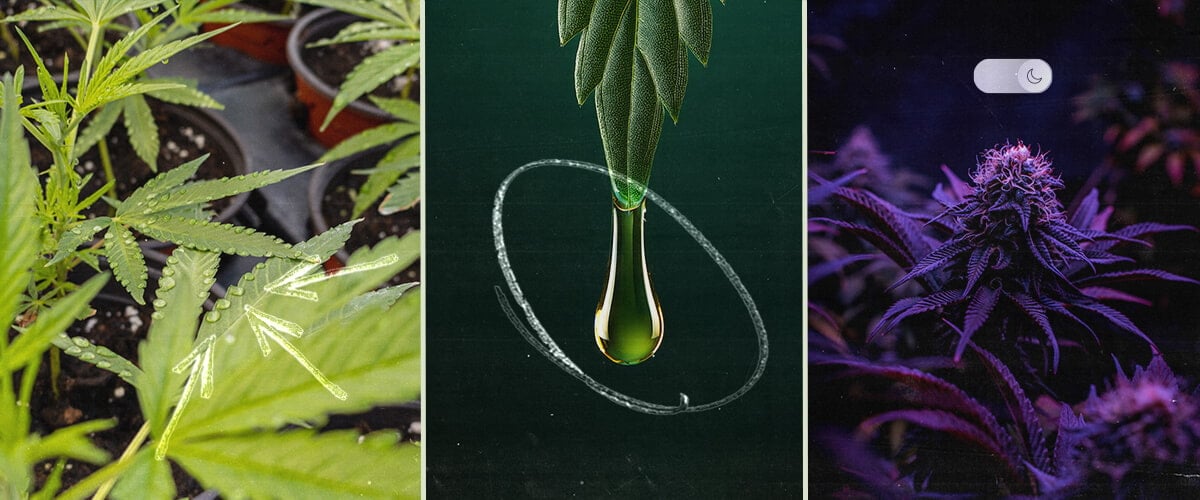
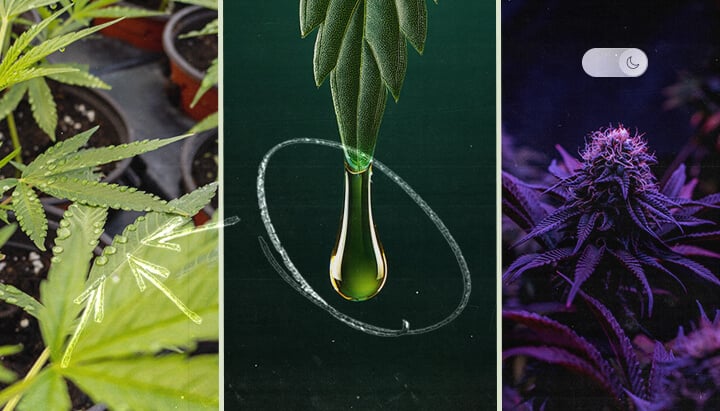
Identifying guttation in your cannabis plants is pretty straightforward. Look for the following factors to tell it apart from dew and resin:
- Location: Guttation droplets form along the edges and on the tips of leaf serrations. Unlike stomata, which are located generally across leaves, hydathodes are typically situated on the margins.
- Sticky: Guttation sap is more viscous and sticky than mere water, as its title implies. While sometimes clear, these droplets also appear cloudy at times.
- Timing: Guttation primarily occurs at night or in the early morning when plants aren’t transpiring. These droplets then evaporate later in the day following the sunrise and elevation of temperatures.
The Consequences of Guttation in Weed Plants
Guttation certainly comes as a surprise to most growers who first encounter it. But should you worry about it? Not necessarily.
Guttation has both positive and negative attributes. While sometimes an indication of normal physiological processes, it can sometimes point to potential issues. Find out more below.
The Positives of Guttation
Some of the positive aspects of guttation in weed plants include:
- Indicator of healthy root pressure: Guttation signals that the roots of your cannabis plants are actively absorbing water and nutrients, exhibiting a strong and healthy root system likely free of root rot.
- Moisture and nutrient regulation: Ultimately, just like transpiration, guttation is a natural, albeit less commonly known, process. The process allows your cannabis plants to release excess moisture and nutrients when transpiration isn’t possible, contributing to internal balance and healthy growth.
- Potential nutrient source for microbes: Guttation could also serve more of a novel purpose. Plants are known to send sugars, amino acids, and other precious molecules down into the soil to farm beneficial microbes. However, the plant microbiome also occupies the above-ground parts of the organism, or “phyllosphere”. The sugars in guttation sap could help to keep these friendly critters fed and proliferative.
The Negatives of Guttation
While a normal physiological process in plants, excess guttation could indicate a problem with your plants or their growing conditions. The potential downsides of guttation include:
- Nutrient loss: Because guttation contains valuable nutrients, excess exudation could tax plants over time, leaving them deficient in key macronutrients or micronutrients.
- Increase disease risk: While the sugars in guttation sap may help to populate the phyllosphere with beneficial microbes, they can also feed disease-causing organisms such as powdery mildew.
- Impact of humidity: If your plants end up exuding guttation liquid more often than not, this consistent evaporation could cause spikes in humidity in your growing space, potentially increasing the odds of fungal diseases in the canopy.
- Indication of overwatering: Excess guttation can also highlight critical issues in your growing setup. Because it occurs when soil moisture levels are high, frequent guttation can indicate an overwatering problem.
Is Cannabis Guttation Sap Psychoactive or Medicinal?
Cannabis guttation droplets get some growers very excited. Their orb-like shape, occasional deep amber hues, and sticky texture cause some cultivators to speculate over their effects on the body and mind.
Unfortunately, guttation sap offers very little in the way of psychoactive or medicinal effects; you’ll simply be wasting your time if you try and place a few drops on your dabbing nail! As nothing more than water, sugars, and amino acids, cannabis guttation sap doesn’t contain the cannabinoids and terpenes found in resin.
Cannabis Guttation: A Natural and Normal Process — Most of the Time
Guttation is a fascinating process that reflects the complex physiological processes occurring in cannabis plants. While it can indicate healthy root pressure and serve as a nutrient source for microbes, excess guttation also poses risks such as increased disease vulnerability and nutrient loss.
Understanding guttation empowers growers to make informed decisions about plant care and optimise their cultivation practices for better yields and healthier crops. Next time you come across guttation, you can approach this phenomenon free of concern and overexcitement. Simply enjoy observing this natural process and soak up this relatively rare sight.


























